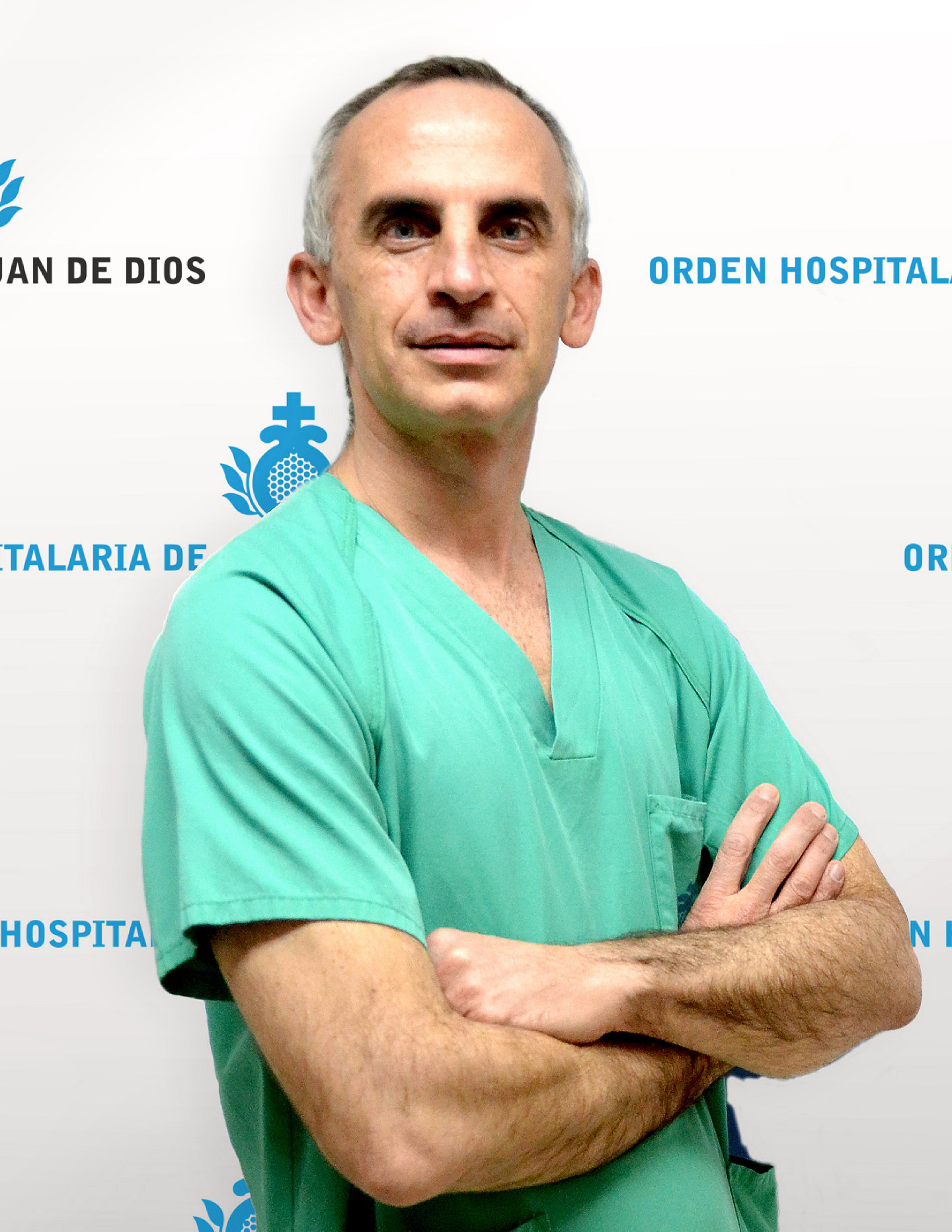You will not be able to operate without them
06.29.2020
"It is true that the type of surgery we do will always involve these splashes and stains, but it is also true that we can reduce the risk we have in each surgery, in each patient."
"I seem to remember using a Personal Protection Helmet in surgery for the first time about 15 years ago, and I did it for a very personal, and perhaps selfish reason. I had to operate on an HIV-positive patient with HCV secondary to retroviral coxarthrosis, and I demanded from my hospital management at the time that if they wanted me to operate on that patient, they had to guarantee that I would not be at risk of contagion from splashes of blood and fluids.
We all know that these are very high-speed, high-volume splashing of blood surgeries that can impact us. I have always worn protective glasses. It is true that the type of surgery we do will always involve these splashes and stains, but it is also true that we can reduce the risk we have in each surgery, in each patient.
I would like to invite you to record a video of your surgery in slow-motion at the time of making the femoral cuts in the knee prosthesis or when impacting the cup in the hip prosthesis. You will be surprised when viewing the video at the number of drops and particles that fly off in all directions, and that we do not usually notice during surgery, but viewing it in slow motion is very striking.
Once I started to use these protection systems and felt safe and comfortable with their use, I began to expand their use, because these systems have also shown a reduction of the risk of contamination in the operating room.
At first when you start to use the system, you may feel a bit uncomfortable - due to its weight or in some cases the reflection of light - but newer generations of helmets improved a lot in their design and are very quiet, with a long-lasting battery that provides a flow of constant internal filtered air that allows us to breathe comfortably. They are powerful enough to have a fresh air flow, which is much appreciated, especially in those surgeries where we can suffer from heat with physical effort and headlights.
Recently there have been additional improvements in the design of helmets such as light bulbs in the helmet and removable sterile screens that - like with F1 riders or GP motorcycle riders - when the visor gets dirty, you can remove a plastic cover (PeelAway Lens) and you are left with a clean screen. In case these helmets get heavily stained, you can easily remove this sterile screen with your hands, and uncover a clean screen that allows you to continue operating.
I think that thinking about the safety of our patients and our safety we would have to wear these PPE. I am sure that once you try it and get used to it you will not be able to operate without them."
Dr. Revenga is a Orthopaedic and Trauma Surgeon at Hospital San Juan Grande, Jeréz, Spain. He is specialised in knee and hip prosthesis surgery, as well as navigation and robotics systems in surgery.
Read more about Dr. Revenga here
Want to learn more? Visit dr. Revenga's website:
https://www.drrevengagiertych.com/
All opinions expressed in this blog are solely and exclusively from Dr. Revenga and do not represent Stryker's.
Disclaimers:
1) The Flyte PPE products are not cleared as respiratory protective products. European Centre for Disease Prevention and Control guidance for respiratory protection directs the use of an FFP3 respirator mask for medical staff performing Aerosol Generating Procedures.
2) Dr. Revenga is a paid consultant of Stryker. The opinions expressed herein are the opinions of Dr. Revenga and not necessarily those of Stryker. Individual experiences may vary.
3) This information is intended solely for the use of healthcare professionals.
"
I am sure that once you try it and get used to it you will not be able to operate without them.
"
- Dr Revenga -
Orthopaedic and Trauma Surgeon - Hospital San Juan Grande - Jeréz, Spain
Visit dr. Revenga's website:
https://www.drrevengagiertych.com/
This information is intended solely for the use of healthcare professionals.
A healthcare professional must always rely on his or her own professional clinical judgment when deciding whether to use a particular product when treating a particular patient. Stryker does not dispense medical advice and recommends that healthcare professionals be trained in the use of any particular product before using it in surgery. The information presented is intended to demonstrate the breadth of Stryker product offerings. A healthcare professional must always refer to the package insert, product label and/or instructions for use before using any Stryker product.
Products may not be available in all markets because product availability is subject to the regulatory and/or medical practices in individual markets. Please contact your Stryker representative if you have questions about the availability of Stryker products in your area.
Stryker Corporation or its divisions or other corporate affiliated entities own, use or have applied for the following trademarks or service marks: Flyte, Stryker. All other trademarks are trademarks of their respective owners or holders.
The products depicted are CE marked in accordance with applicable EU Regulations and Directives.
SMACC Project No. 2020-25016

